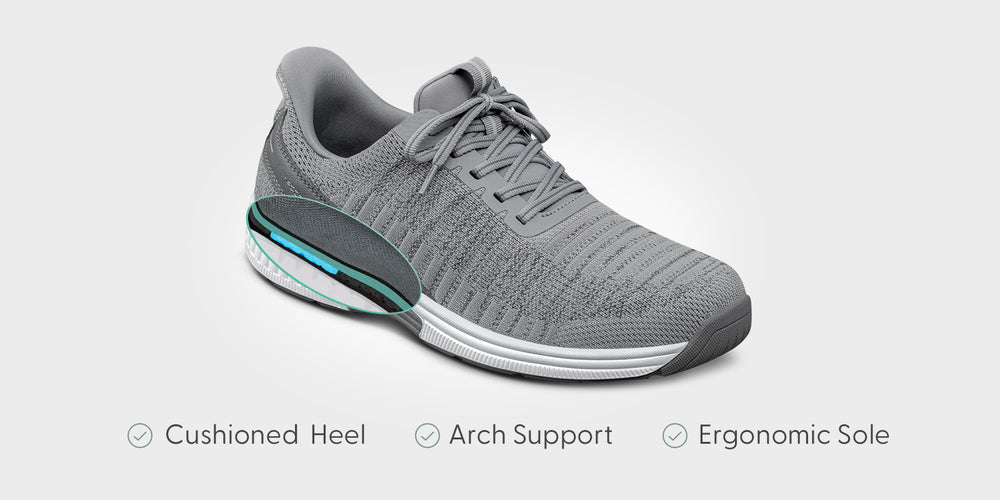Cushioning, Support, and Pain Relief for Every Step
Orthofeet’s shoes for heel spurs are specifically designed to alleviate discomfort and reduce pressure on your heels, helping you move comfortably and pain-free. With advanced orthopedic features, these shoes cushion sensitive areas, provide targeted support, and promote proper foot alignment. Whether you’re on your feet all day or looking for casual comfort, Orthofeet’s heel spur shoes for women and men are the perfect choice for enhanced mobility and relief.
Why Choose Orthofeet Shoes for Heel Spurs?
Orthofeet shoes are engineered to address the root causes of heel pain, ensuring both comfort and protection. Here’s why they stand out:
- Heel-Centered Cushioning: Extra padding in the heel area absorbs shock and reduces strain, providing immediate comfort for sensitive heels.
- Enhanced Arch Support: Built-in orthotic insoles help distribute pressure evenly across your feet, relieving stress on the heel and improving alignment.
- Soft and Protective Fit: Seam-free, padded interiors prevent irritation, making these shoes ideal for individuals with heel spurs or other sensitive foot conditions.
- Durable and Stylish Options: Orthofeet combines therapeutic benefits with modern designs that suit any lifestyle.
Key Features:
- Cushioned Heel Pad: Targeted heel cushioning absorbs impact, relieving pressure on sensitive areas and reducing pain.
- Orthotic Insoles with Arch Support: Built-in support enhances foot alignment and reduces stress on the heel and arch.
- Shock-Absorbing Soles: Lightweight soles minimize impact on the feet, knees, and lower back, providing long-lasting comfort.
- Spacious Toe Box and Extra Depth: Prevents pressure on the toes, accommodating swelling or other foot conditions.
- Slip-Resistant Outsoles: Ensures stability on a variety of surfaces, allowing you to move with confidence.
Benefits Designed for Comfort and Relief:
- Relieve Heel Pain: Targeted support and cushioning help reduce the discomfort caused by heel spurs, plantar fasciitis, or similar conditions.
- Improve Stability and Balance: Ergonomic designs promote proper posture and alignment, enhancing overall mobility.
- Stay Comfortable All Day: Orthofeet shoes are ideal for extended wear, whether at work, running errands, or relaxing at home.
Perfect for Every Activity
Orthofeet’s heel spur shoes are versatile, offering comfort and support wherever you go:
- Work and Daily Activities: Stay supported and pain-free during long hours on your feet.
- Leisure and Relaxation: Enjoy unmatched comfort while walking, traveling, or spending time at home.
Rediscover comfort and mobility with Orthofeet’s shoes for heel spurs. Experience the difference that advanced support and cushioning can make in your everyday life.
Shop the collection today and take the first step toward pain-free living!

